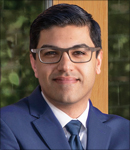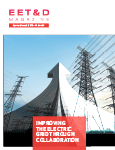Safety, leisure, work and now more than ever, education, heavily depend on a power grid that can reliably supply and deliver electricity to customers while supporting other critical lifeline systems. The power grid, however, is becoming increasingly complex to the point that traditional grid control and decision-making built on classical computing methods may fail to address its emerging needs. The growing proliferation of intermittent renewable generation resources, increased frequency and intensity of natural disasters and weather events due to climate change, a rapidly electrifying transportation sector and cyber vulnerability are just some of the complicating factors. Luckily, there is an emerging solution to this and many other challenges across industries–quantum computing. As a broad range of use cases and pilots ramp up, quantum computing is set to complement, and in some instances, even replace classical computing over the coming years.
Unleashing the power
Quantum computing is developed based on quantum mechanical phenomena that describe the nature and conduct of energy and matter at the level of fundamental subatomic particles. Quantum computers process information differently than classical computers (using qubits that could be either 0 or 1 or any combination of 0 and 1). The potential power of quantum computing is in the superposition and entanglement of states, allowing the execution of exponentially many computations in parallel. Given its promise of disrupting traditional practices in many sectors, investment in quantum technologies is booming. Tech giants, such as Google and IBM, are developing quantum computers. Many others, including Intel and Microsoft, are following suit by focusing on the software to support hardware developments. Governments are investing billions of dollars in research and development of this technology.
Many quantum applications are expected to have significant disruptive implications for industries and businesses – currently there are extensive ongoing efforts in the areas of finance, cybersecurity and cryptography, forecasting, drug design, molecular modeling, aerospace and weather services. Among these noteworthy pilots is an investigation of the quantum computing potential in managing critical infrastructure that we heavily depend on: the electric power grid.
Managing a lifeline system
Computation has been central to electric power grid management for decades. As these grids become more complex, there is significantly more data to process. Using existing mathematics on more powerful computers is not a practical approach to address these broad complexities, hence requiring new classes of models, algorithms and solutions. Electric utilities, as the responsible party to ensure service reliability, are at the forefront of this transformation and are keenly aware of the looming challenge.
ComEd, the electric utility serving four million customers in northern Illinois and Chicago and a pioneer of electric power grid transformation, gathered multiple leading experts to discuss this topic and initiate a multi-year collaborative effort. Participants including multiple universities, national laboratories and quantum hardware and software developers participated in a day-long workshop in Chicago. The goal: to investigate how quantum computing can empower electric utilities to build the smart grid of the future. The following summarizes the pilot study we undertook.
Tackling a fundamental grid problem: power flow
Our team, representing the University of Denver, worked closely with ComEd and a Colorado-based R&D company (focusing on quantum-grid technology and software solutions) to model and solve one of the most fundamental power system problems — the power flow — using quantum computing. Power flow is a numerical analysis based on the physics of the grid, and its solution determines the amount of flow of electricity on various transmission and distribution lines. Power flow is the keystone of electric utilities' decision-making in grid operation, control and planning. However, it is a daunting task to solve this problem efficiently due to intricacies induced by the laws of physics.
Many critical electric utility decisions rely on the solution of the power flow. Turning on a power plant, rerouting power to prevent power outages, de-energizing part of the grid to reduce chances of wildfires, mobilizing repair crew to respond to hurricane damages and building a new high-voltage transmission line, are just a few. Besides its importance in grid operation, power flow is a unique candidate for quantum applications, as it offers near-term technical feasibility on available quantum hardware, and the existing quantum algorithms to solve this problem guarantee a speedup.
Results underscore need for disruptive technology
The results: Our power flow studies on a test system showed a speedup of more than 30 times compared to that of a classical computer. This is a significant milestone, as it shows great promise in solving a wide range of critical electric power grid problems such as the ones mentioned above more rapidly and efficiently. In simple terms, this 30x speedup means that, for example, if planning for grid repair and recovery after a natural disaster takes one hour using classical methods, the quantum computer would solve this problem in less than two minutes. This in turn ensures a faster grid recovery and shorter power outages for residents in disaster areas. Imagine the effect this would have on helping to save lives, restore power and ensure communication within the community, among many other benefits.
The obtained quantum speedup holds tremendous potential for grid operators in revolutionizing traditional decision-making practices. While there are multiple challenges yet to be overcome with large-scale implementations of quantum computing, these challenges are expected to be solved in the near future as technology progresses. In the meantime, utilities and other industries should forge ahead with small-scale pilots that co-exist with classical computers.
How to get started now
Although we are still a few years away from commercialized universal quantum computers, now is the time to investigate the benefits of quantum computing as viable solutions across many applications and industries and gain a competitive advantage. Below are recommendations on how to get started:
- Identify areas in need of computational and analytical improvement in the business. Look into the complex problems that are currently solved using approximations or simplifications. Also, consider the areas with a growing volume of collected data.
- Research the feasibility and application of quantum computing to solve those identified problems. Near-term technical feasibility and proven algorithmic solutions to guarantee a speedup are the main points to consider.
- Run pilots. Collaboration is key in successful pilots. Universities are well-positioned and equipped to both conduct research and lead pilot studies.
- Make investments now, so when existing hardware and software limitations are removed, your applications and use cases are ready to move forward.
Conclusion
Legacy grid decision-making using classical computing is hard-pressed to address the growing complexity of today’s electric power grid. Quantum computing models, frameworks and pilots today can exist alongside classical computing to provide practical solutions in a fraction of time — not only for utilities but for many other industries and applications. As quantum technology becomes commercially viable, companies that today evaluate and invest in applications and use cases will be poised for game-changing business transformation once quantum computing technology is ready for widespread use.
 Dr. Amin Khodaei is a professor of electrical and computer engineering, the director of KLab and the executive director of industry-university consortium on quantum-upgraded electric system of tomorrow (QUEST) at the University of Denver. His research is focused on the climate crisis, the grid of the future, and advanced technologies to modernize the grid, including artificial intelligence, blockchain, and quantum computing. He has authored/co-authored more than 190 peer-reviewed technical papers. As an active member of the IEEE Power & Energy Society (PES), he has served on multiple editorial boards and also as the technical chair of the 2016 and 2018 IEEE PES T&D conferences.
Dr. Amin Khodaei is a professor of electrical and computer engineering, the director of KLab and the executive director of industry-university consortium on quantum-upgraded electric system of tomorrow (QUEST) at the University of Denver. His research is focused on the climate crisis, the grid of the future, and advanced technologies to modernize the grid, including artificial intelligence, blockchain, and quantum computing. He has authored/co-authored more than 190 peer-reviewed technical papers. As an active member of the IEEE Power & Energy Society (PES), he has served on multiple editorial boards and also as the technical chair of the 2016 and 2018 IEEE PES T&D conferences.







